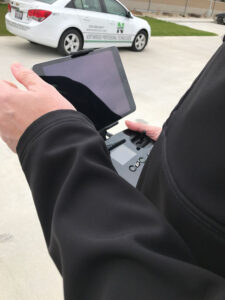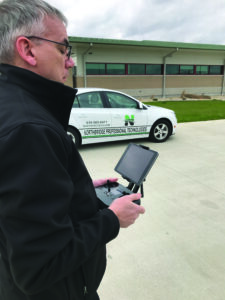With all the attention unmanned aerial vehicles (UAVs), also known as drones, are getting, it can be difficult to separate the hype and excitement of this new technology from the reality of regulations, applications and equipment. All this attention has both helped and hurt the UAV industry.
On one hand, the media spotlight has helped draw attention to potential applications and helped raise awareness, but at least initially, media has tended to focus mainly on the risks of drones being used inappropriately. Much of the inappropriate use of UAVs has been at the hands of individuals – not business users.
The idea of getting a bird’s-eye view of distribution and transmission power lines without deploying a crew is of great interest to electric cooperatives. Co-ops are using drones to inspect power lines, poles and towers as part of a routine inspection program and also after major storms. Co-ops are also using these systems to record vegetation growth in order to more accurately trim trees. UAVs can even replace some tasks currently done with costly manned aircraft.
Many utilities around the country are currently testing these systems to determine the most effective way to use them. Currently, UAVs are being utilized for video inspection, infrared evalution and vegetation assessment of transmission and distribution power lines. As this technology evolves, co-ops will find unique one-off applications that provide great value for their unique needs.
Electric utilities are uniquely positioned to make great use of UAVs because the assets that need to be inspected are stationary. Poles and lines are generally in the same place for decades. Most utilities use a mapping system that tells them the precise location of each piece of equipment on the system. This would allow the UAV to fly a precise route and focus exclusively on the right of way. Electric utilities are one of the few users of UAVs that have this capability.
However, major advancements are necessary for UAVs to enter day-to-day operations at most utilities. The batteries contained on most civilian UAVs are currently not sufficient to fly the entire length of most power lines while carrying the necessary sensor payload. There is also a need for software that can automate the process of reviewing video, infrared and other sensor information taken from the UAV. Currently, many utilities are using a person to monitor all of the video and other information collected by the craft. An automated process would highlight segments of the video for detailed human inspection.
Electric cooperatives are sensitive to the privacy concerns of their members and the member’s desire for reliable and affordable electricity. The use of UAVs will meet both of these goals.
Brian Sloboda is a program manger specializing in energy efficiency for the Business Technology Strategies (BTS), a service of the Arlington, Va.-based National Rural Electric Cooperative Association.











